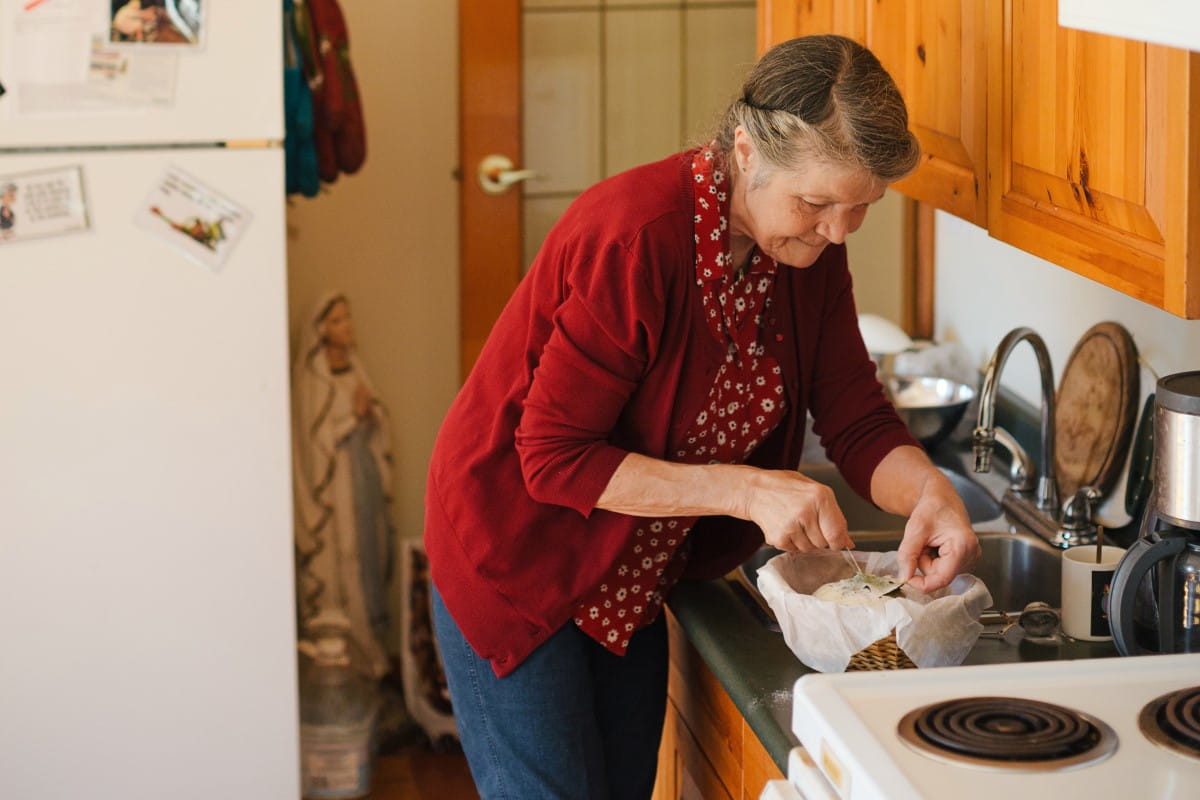“It can seem a long way off, but things can change very quickly. If you’re unable to make your own choices it can be hard for your family to know what you’d like to do unless you’ve made your wishes clear.”—Ramona Kleipas, Australian Unity Regional General Manager for Central-South NSW Home Care Services.
Key points
- Spending your later years in the comfort of your own home can have a big impact on your wellbeing.
- There are a range of options to help keep you independent.
- It's never too early to start planning for home care services.
Ageing at home tops the list in many people’s retirement plans. Living in your own residence, surrounded by the things that bring you comfort in a location you know and love can have a significant impact on your overall wellbeing.
But, sometimes, a little bit of extra help is needed to keep you living independently. From assistance with the grocery shopping or personal care to transport and beyond, there’s plenty of support out there to help you live independently and happily at home.
In this article, we discuss how to locate the services best suited to your needs and set out a simple, step-by-step overview of the application process.

What type of home care is right for me?
If you’re over 65 (or over 50 if you’re an Aboriginal person or Torres Strait Islander), you could be eligible for a range of affordable, government-subsidised services designed to help you live a meaningful and independent life at home.
There are the main two programs offered by the Australian government – the Commonwealth Home Support Programme (CHSP) and Home Care Packages (HCP). See our article on home care support programs for more detail on these packages and other programs such as short-term restorative care and veterans’ programs.
These programs are part of the government-subsidised aged care system, helping to make staying in your home more affordable.
“Generally, if you’re on a full pension you won’t have to pay, although if you can afford it, you’re expected to make a contribution,” says Ramona Kleipas, Australian Unity’s Regional General Manager for Central-South NSW Home Care Services. “This can vary according to your income assessment. Any contribution will be deducted from the amount the government pays your provider, so you’ll be billed each month by your provider for that shortfall.”
Be sure to ask your provider what they charge for services before you enter into any agreement with them.
Commonwealth Home Support Programme
The CHSP provides entry level support and suits people needing a little bit of extra help. Most people in the CHSP need about one or two services to help them stay independent, with services ranging from personal care, shopping and transport to cleaning and gardening.
Home Care Packages
If you require a greater level of assistance, a Home Care Package may be a better option, as it offers a co-ordinated approach to managing more complex or intensive needs while still helping you to maintain your independence. HCP services fall under four levels depending on your needs, and cover services such as home maintenance and modifications, social support, assistive technology, allied health and nursing.
Applying for home care services
If you’re thinking of applying for home support services, it’s never too early to start planning. Here we outline what you can expect when applying for CHSP and HCP services, with some expert tips and advice to support you through the process.
Step 1: Requesting an assessment
Start the application process by visiting the My Aged Care website or calling 1800 200 422 to request an assessment.
The person you speak to will ask for an outline of your needs before making a preliminary decision about whether you’re eligible for assistance, and will consider the level of support you might need to stay independent in your own home. This decision isn’t final – the allocation you receive will depend on the outcome of your assessment.

Step 2: The assessment process
If, from the information provided during the call, it sounds like you need low-level support, a member of the Regional Assessment Service (RAS) will visit you at home. They will ask you questions to determine what help would be most useful before tailoring a support plan to your needs. If you are eligible for support through the CHSP, you should start receiving help within a couple of weeks, depending on the availability of your chosen provider.
If it sounds like you need more support than what the CHSP offers, you’ll get a more comprehensive at-home assessment from an Aged Care Assessment Team (ACAT) assessor. My Aged Care will confirm the date and time of their visit.
“In the meantime, it’s a good idea to jot down where you believe support would be most useful and anything else you’d like to discuss,” explains Ramona. “With any assessment, you’re welcome to have a family member or friend with you for support.”
If you’re eligible for a Home Care Package, you’ll receive a letter with details of your approved package level and the reasons why this was chosen for you. Only a limited number of packages are available, so you’ll be placed on a national prioritisation queue and notified when a place becomes available. You can expect to wait three to six months for a level 1 package, and 12 months or more for levels 2, 3 and 4.
“Those with urgent circumstances are approved as high priority,” says Ramona, “which is designed to give them access to care quicker”.
Step 3: Choosing a provider
If you’ve been assigned a Home Care Package, you have 56 days from the date you receive your acceptance letter to decide who you’d like to provide your care. It’s important that you carefully research providers—if you need more time, you can ask My Aged Care for a 28-day extension.
Once you’ve made your choice, a good provider will work with you to tailor your HCP across the services that are most important to you.
“These should include things that give pleasure and meaning to your life and help you to maintain social connections, as well as the more practical aspects of care,” explains Ramona.
What happens if things change?
Your care plan is designed to be flexible and can be added to or cancelled at any point. You can also ask My Aged Care to reassess your care needs as they evolve.
“At Australian Unity, our carers look for any changes in health and wellbeing and report back if they’re concerned,” says Ramona. “We can then help our customers to apply for more suitable care.”
Ramona encourages everyone to discuss what they’d like their future to look like well before they need any help.
“It can seem a long way off, but things can change very quickly,” she says. “If you’re unable to make your own choices it can be hard for your family to know what you’d like to do unless you’ve made your wishes clear—or, better still, appointed an enduring power of attorney. That way, there’ll be no confusion and you can be sure you’ll always get the support that’s right for you.”
Disclaimer: Information provided in this article is of a general nature. Australian Unity accepts no responsibility for the accuracy of any of the opinions, advice, representations or information contained in this publication. Readers should rely on their own advice and enquiries in making decisions affecting their own health, wellbeing or interest. Interviewee names and titles were accurate at the time of writing.


